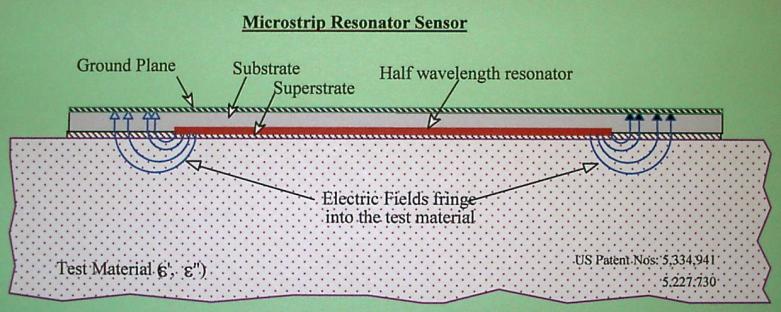Principles of Microwave Sensing (continued)
The MDA-1000 sensor heads are innovative, patented open reflection resonators. When a sensor makes physical contact with the material under test, the electromagnetic fields near the open resonator fringe into the test material. The dielectric constant (e') and dielectric loss factor (e") of the material thereby affects the resonator's resonant frequency and reflection coefficient (or return loss) at the resonant frequency. These are the two independent measured parameters from which the dielectric components (e', e") and/or certain other physical parameters (e.g., moisture and density) can be determined.

Sensor heads are often application specific, depending on whether the test material is a solid, a particulate or a liquid, on the ranges of dielectric parameters (e', e"), on the material abrasiveness, on the desired spatial data averaging, and on line mounting constraints. Sensors are available in a variety of shapes; flat or curved for flush mounting to a plane or curved surface, or cylindrical for immersion in a flow stream or for hand-held insertion into liquids or granular materials. (Click Products 1 to view sketches of MDA 1000 implementations) For nondestructive inspection (NDI) applications, sensors are configured for hand-held or automated scanning or mapping over material surfaces.(More details about NDI)
Sensor size is also application specific, e.g., large particulates such as wood chips require a sensing area that is comparable to the chip size. The effective sensing depth ranges from a few millimeters to a few centimeters, chiefly determined by sensor size and design. Polarized sensors are available for monitoring directional (anisotropic) dielectric properties, such as when the material contains aligned fibers. Temperature dependence of (e', e") can be compensated if needed. Cure monitoring sensors operate at a maximum temperature of 230 C (480 F). Dual resonant frequency sensors can be provided for special applications, e.g., monitoring three independent properties simultaneously such as moisture, density and salt content.
Previous Page Next Page |